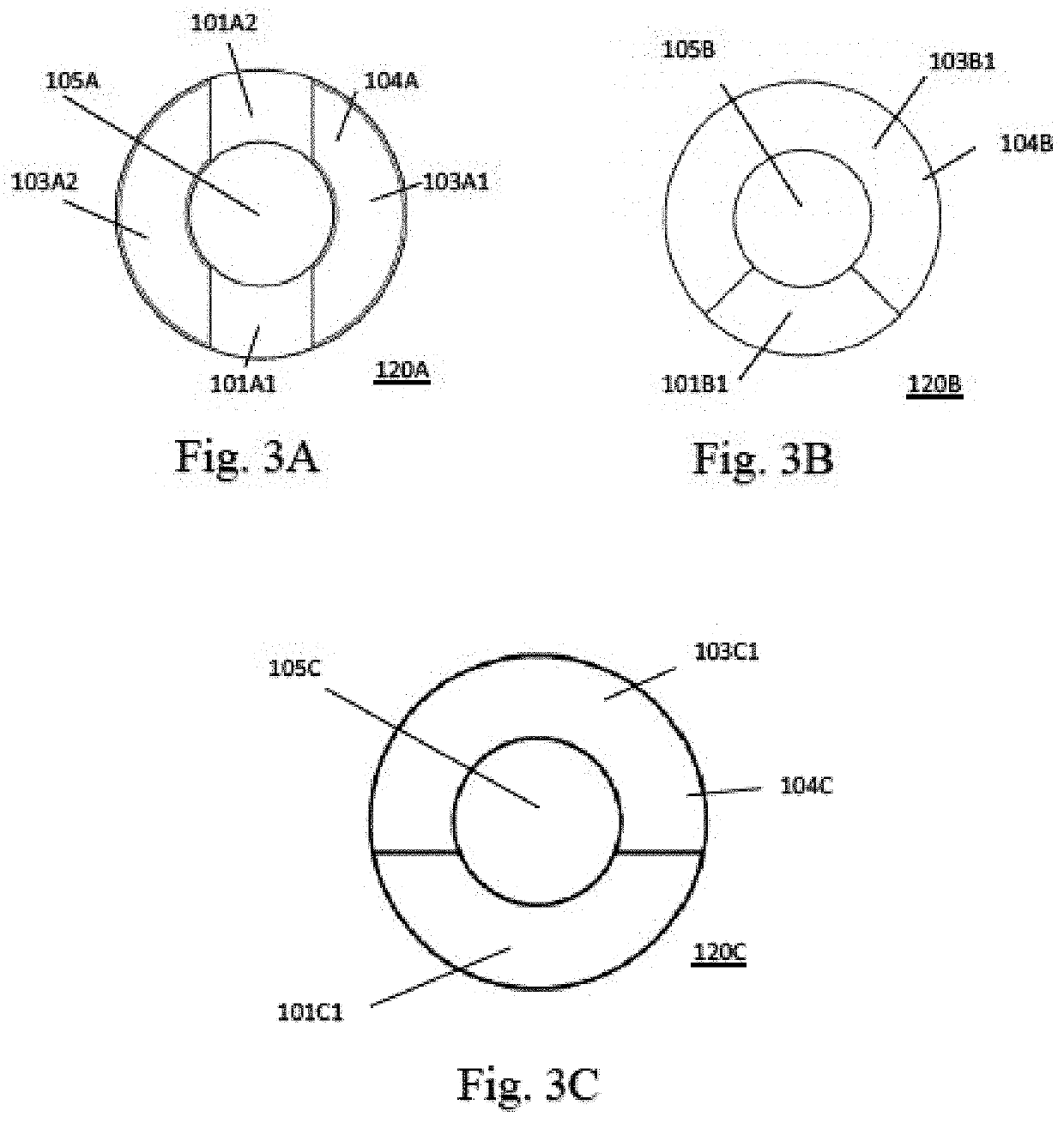Discontinuous wall hollow core magnet
a hollow core magnet and discontinuous wall technology, applied in magnetic separation, instruments, fluid controllers, etc., can solve the problems of difficult to aspirate the supernatant without, relying on centrifugation and/or vacuum steps, and traditionally difficult to automate tasks, etc., to achieve better angle, easy pipetting, and more room
- Summary
- Abstract
- Description
- Claims
- Application Information
AI Technical Summary
Benefits of technology
Problems solved by technology
Method used
Image
Examples
Embodiment Construction
[0027]A description of preferred embodiments of the invention follows.
[0028]In many molecular biology procedures, macromolecules are needed in a purified form. For example, to prepare a DNA or RNA sample for sequencing e.g., Next-Generation-Sequencing (NGS), it can be extracted from any of a variety of clinical sample types, such as tissue, blood, cheek swabs, sputum, forensic material, FFPE samples etc. For example, in certain NGS procedures, the initial extraction from the primary sample is followed by a multitude of enzymatic reactions called library construction. Each enzymatic reaction is followed by another extraction step to isolate conditioned nucleic acid from the reaction mix. The enzymatic reactions are typically followed by amplification (using PCR) and / or size selection (to limit the distribution of fragment sizes to a narrow band of a few hundred basepairs (e.g. 500-700 bp)). The workflow from primary sample to sequencing-ready DNA or RNA may involve from 5-10 separate...
PUM
| Property | Measurement | Unit |
|---|---|---|
| volumes | aaaaa | aaaaa |
| volume | aaaaa | aaaaa |
| paramagnetic | aaaaa | aaaaa |
Abstract
Description
Claims
Application Information
 Login to View More
Login to View More - R&D
- Intellectual Property
- Life Sciences
- Materials
- Tech Scout
- Unparalleled Data Quality
- Higher Quality Content
- 60% Fewer Hallucinations
Browse by: Latest US Patents, China's latest patents, Technical Efficacy Thesaurus, Application Domain, Technology Topic, Popular Technical Reports.
© 2025 PatSnap. All rights reserved.Legal|Privacy policy|Modern Slavery Act Transparency Statement|Sitemap|About US| Contact US: help@patsnap.com



